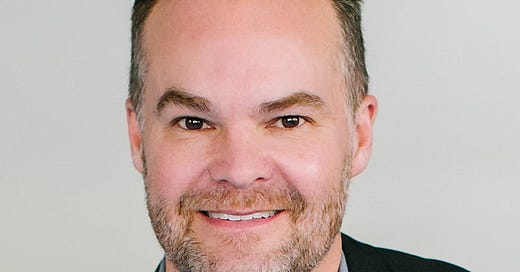Stuck in Place? 7 Strategies to Increase Organizational Flexibility
Can You Touch Your Toes?
I'm envious if you can. I can't. I've never been too flexible to be fair.
When I was ten, inspired by Mary Lou Retten's '84 Olympic run, I tried gymnastics for a season. "Tried" is a crucial word for what I did. It didn't take long to realize my lack of flexibility hindered my Olympic dreams.
It turns out that my flexibility hasn't improved over the years. If it is even possible, I'm less flexible now than at the tender age of ten.
Time Makes Ridgid
When I interviewed William Vanderbloemen for my first book, Big Shoes To Fill, he commented,
"Age reduces flexibility. This is true for organizations, too."
William is a runner. We were talking about exercise and leadership when he noted this insight.
He's so right.
The longer a business, church, or organization exists, the more set its ways become.
From Idea to Organization
Chapter 2 of Big Shoes To Fill dissects this reality more deeply, but for this conversation, it's critical to understand how leadership and management work with and against each other.
In its simplest form, leadership is the act of creating what can become, whereas management is the art of efficiently and effectively maintaining what currently exists. Both leadership and management are necessary for organizational success.
Here's the rub: The longer an organization exists, the more it gets "organized." The longer systems, processes, and methods remain, the more ingrained they become. Like ruts in a road, the more the organization drives the same routes, the deeper the ruts on the path.
Every organization begins with a leader and an idea. To scale the concept, the leader engaged management. Over time, managing the idea became the focus of the work, leaving us with William's observation.
Increasing Organizational Flexibility
The following strategies are crucial for any company, church, or organization to embrace, as change is the only constant in life and culture. However, for the leader of an established organization or a leader stepping into a new role, the rigidity of the team or organization presents a unique challenge.
If you want to increase organizational flexibility, here are 7 strategies to consider:
1. Grow Your Relational Influence
From page 100 of Big Shoes To Fill, "People may obey your position, but they'll follow your influence."
If you want to help your team and organization stretch more, they need to trust you first. Trust is built through relationships. It's about your competency and character. If you intend to lead change, you must first inspire the team to walk alongside you. This can be a time-consuming endeavor, but without the relationship, your influence will suffer.
Flexible organizations prioritize relational influence over positional authority.
2. Separate Clarity and Uncertainty
My gymnastics coach pushed and prodded me to keep my legs straight when stretching to touch my toes, which was impossible, by the way. The goal was clear, though – touch my toes with straight legs. I never got there, but at least the target was clear.
Rigid organizations insist on constant clarity and absolute certainty. The problem is only one can exist during seasons of change and transition.
The mission and vision drive clarity, but the methods and strategies create certainty. The mission may never change, but methods frequently do. Or need to.
Strategies are created for current realities. This is true for every method, system, and approach. How most companies operate today made perfect sense when the systems were designed. But strategies are time-stamped. When things change, the mission remains, but the method must flex.
HINT: Adding "For Now" can keep you relevant forever.
Flexible organizations remain married to their mission but only date their model.
Keep reading with a 7-day free trial
Subscribe to Gavin’s Substack to keep reading this post and get 7 days of free access to the full post archives.



